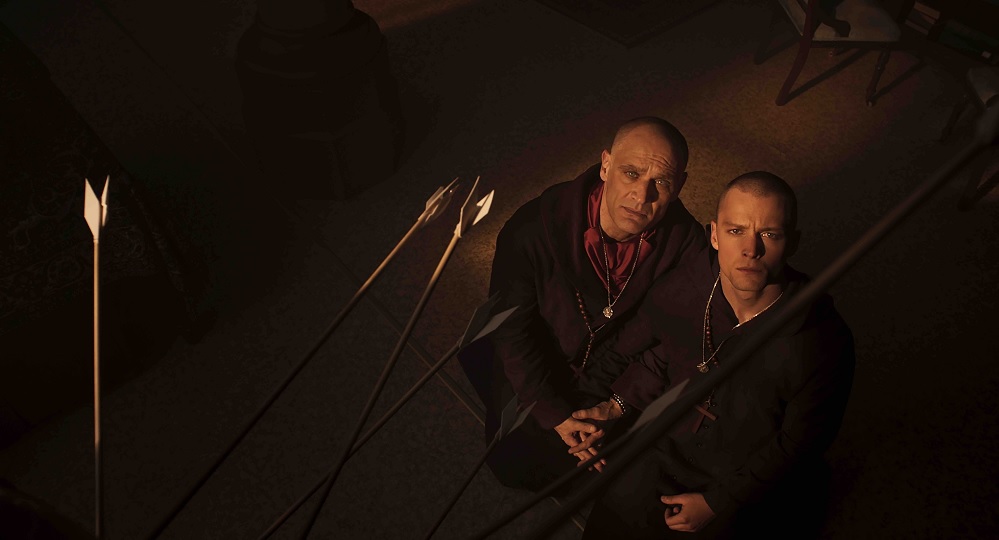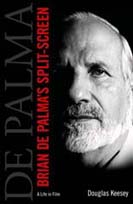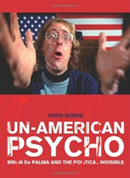TWIN CHARACTER NAMES MIRROR THOSE OF THE TWINS IN 'SISTERS'

Martin Girard, the co-screenwriter of Bruce LaBruce's Saint-Narcisse, tells De Palma a la Mod that the film "is profoundly influenced by the cinema of Brian De Palma (my all time favorite director, I worship him). Saint-Narcisse that I have co-written with Bruce (another big fan) is about twins (named Dominic and Daniel) and so much more... I'm very proud of the film, of its mix of satire, melodrama, horror, mystery, subversion... and numerous hommages to the master." Girard adds that yes, "the names are a direct reference to Sisters, but you’ll see that there are also many themes close to Obsession and Carrie. After all, it’s a story about double and religious fanatism, among many other things..."
This week, Armond White reviews the film for National Review:
Saint-Narcisse, a place of the imagination, is an ironic destination for LaBruce’s protagonist, who loves to take pictures of himself. Duval looks like a Marvel superhero: curly hair, curious eyes, gym-fit body (part Chris Evans, mostly Sebastian Stan). His arrival in Saint-Narcisse evokes certain gay cultural signposts, from Aubrey Beardsley–style ink-drawing flashbacks to the erotic-art film Pink Narcissus. It’s a combination of myths — from mother dominance to same-sex narcissism — once used to either explain or represent homosexuality. LaBruce adds his own mythology, evoking Brian De Palma’s 1973 thriller Sisters (which starred Canadian actress Margot Kidder as twins Dominique and Danielle), playing with the idea of split personality to further tease queer pathologies that are either inflicted or alleged.“Everyone despised us for what we did and what we were — your grandmother, the church,” Dominic’s witch-artist mother explains, defending her own transgressions. LaBruce’s post-Stonewall, post-Warhol sensibility never shies away from transgression, which is why he has made the bravest, most emotional films about gay experience by any artist in the Western Hemisphere. His only rival is Mexico’s Julián Hernández. In the sequence where the two suedehead twins confront each other in the woods, they share curiosity, frustration, and desire. Their yin-yang postures in postcoital Last Tango stills are daringly cinematic — like the montage of Sebastian reclining against a tree, which dissolves to a rippling lake, leading to the classical mythological image of Narcissus seeing himself reflected in water. These beautiful contemplative moments, more sensitive and sensual than in LaBruce’s 2017 film The Misandrists, are unexpectedly classical.
But LaBruce must interrupt classicism with agitation in the form of institutional critique: Brother Daniel’s sexual identity is derailed by the rapacious priest (Andreas Apergis) in an order of eccentric monks whose seclusion (“Evil grows in the dark,” by the Poppy Family) features S-M rituals and manic self-flagellation. Scenes of monks disrobing and swimming at a pond are like Claire Denis’s Beau Travail finally directed by a gay man, while the corrupt priest’s death is the payback François Ozon tastefully avoided in By the Grace of God.
In Saint-Narcisse, LaBruce works through decadent sexual identity by confronting its corruption. Critic John Demetry pointed out a connection to De Palma’s Carrie (a great movie not generally appreciated for its profound satire of sexual-social-religious guilt) in the scene where an arrow-pierced Saint Sebastian statue (often a gay objet d’art) looks down, comically condemning a perverse supplicant. LaBruce matches that with his own pop-culture jest: Sly and the Family Stone’s “It’s a Family Affair” (“Blood’s thicker than the mud”) during the climax which clears away sorrow, confusion, and narcissism. Saint-Narcisse doesn’t show De Palma’s mastery of suspense tropes but moves from obsessive self-regard to open embrace. Brothers Dominic and Daniel escape the high-priest hypocrite whose lust is stronger than his love, just like LaBruce’s honest, gay-identity horror-satire triumphs over the political blasphemy of Buttigieg’s lust for power.



